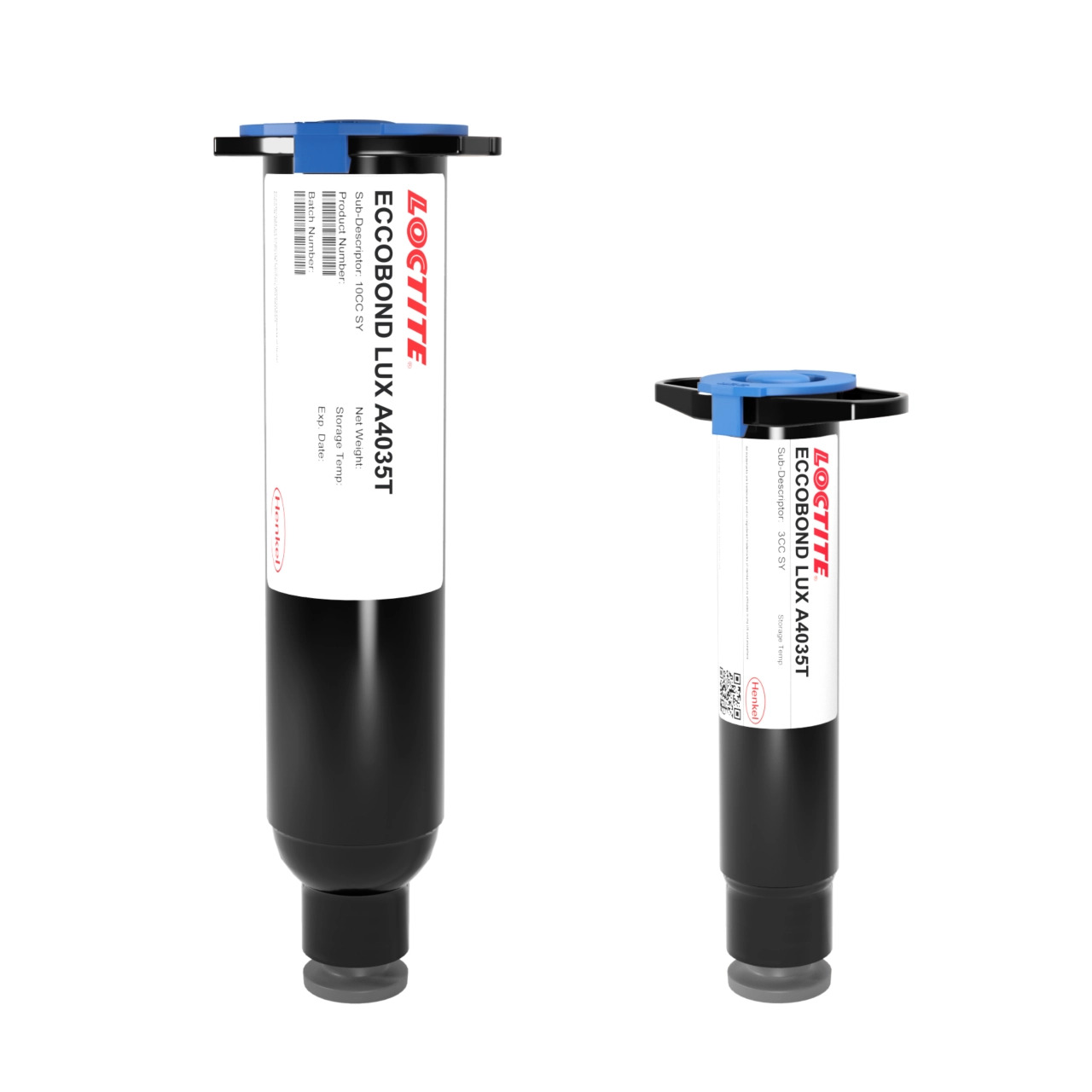LOCTITE ECCOBOND LUX A4035T
Harmonization Code : 3907.30.00.90 | Polyacetals, other polyethers and epoxide resins, in primary forms; polycarbonates, alkyd resins, polyallyl esters and other polyesters, in primary forms : Epoxide resins : Other
Main features
- Photocurable
- Pale yellow
- Photodiode and Optical fiber terminations
Product Description
LOCTITE ECCOBOND LUX A4035T photocurable acrylate adhesive is formulated to enhance productivity in the assembly of optical, fiber optic, and optoelectronic devices. In addition to light cure, this adhesive contains a secondary thermal cure initiator.
LOCTITE ECCOBOND LUX A4035T is an optical grade, pale yellow acrylate that can achieve a thin bondline. It is typically used for photodiode arrays and optical fiber terminations.
UV Cure
- UV or visible light
Secondary Thermal Cure
- 1 hour @ 100°C or
- 2 hours @ 80°C
Technical Specifications
| General Properties | |||||
| Refractive index Refractive index The refractive index determines how much the path of light is bent, or refracted, when entering a material. It is calculated by taking into account the velocity of light in vacuum compared to the velocity of light in the material. The refractive index calculation can be affected by the wavelength of light and the temperature of the material. Even though it is usually reported on standard wavelengths it is advised to check the TDS for the precise test parameters. | 1.55 | ||||
| Thermal Properties | |||||
| Glass Transition Temperature (Tg) Glass Transition Temperature (Tg) The glass transition temperature for organic adhesives is a temperature region where the polymers change from glassy and brittle to soft and rubbery. Increasing the temperature further continues the softening process as the viscosity drops too. Temperatures between the glass transition temperature and below the decomposition point of the adhesive are the best region for bonding. The glass-transition temperature Tg of a material characterizes the range of temperatures over which this glass transition occurs. | 145 °C | ||||
| |||||
| Mechanical Properties | |||||
| |||||
| Physical Properties | |||||
| Viscosity Viscosity Viscosity is a measurement of a fluid’s resistance to flow. Viscosity is commonly measured in centiPoise (cP). One cP is defined as the viscosity of water and all other viscosities are derived from this base. MPa is another common unit with a 1:1 conversion to cP. A product like honey would have a much higher viscosity -around 10,000 cPs- compared to water. As a result, honey would flow much slower out of a tipped glass than water would. The viscosity of a material can be decreased with an increase in temperature in order to better suit an application | 500 mPa.s | ||||



